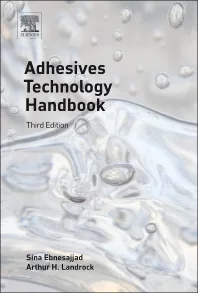UV Coatings Technology Delivers Best Economic Value Statement
It is critically important to understand the full economic value statement for implementing UV technology in your coating process.

UV=Roi+e™
All projects are typically based on ROI – Return On Investment, but UV technology offers one better, UV=Roi+e – Return On Investment and the Environment. You can also define the Roie – economic value of UV – as faster, smaller and cleaner.- Faster – line speed, coating cure and coating optimization
- Smaller – floor space, work-in-process, energy consumption, maintenance cost, capital equipment cost and quality cost
- Cleaner – zero VOCs, no HAPs/NVPs, reduced reporting, and improved health and safety

Faster
Line SpeedFaster line speed, faster coating cure and faster coating optimization are directly correlated to:
- increased production capacity;
- faster through-put;
- more production flexibility; and
- potentially lower piece price.
Coating Cure
Some plastics cannot be heated and some substrates require immediate curing after coating. For these situations UV technology may be the only solution. In addition, cycle time can be cut dramatically, thus allowing much better response to customer needs. The financial gain is more difficult to measure and the measurement here is specifically based on application.
Coating Optimization
Coating optimization has everything to do with coverage and reclaim. With 100%-solids UV, coating coverage is 1,604 square feet at 1 mil with no evaporation, etc. Reclaim can also be achieved using a variety of industry-proven techniques. The financial gain can be measured in coating usage and calculated to a per-part cost of coverage. Figure 1 shows examples of a baffle filter for collecting overspray.

Smaller
Floor SpaceSpray systems typically consume the same floor space across coating technologies. UV-light systems are typically much smaller – approximately 10 - 15 feet in length – compared to conventional ovens (Figure 2). Air-dry solutions typically require more floor space and/or overhead. Therefore, financially one must measure the following:
- Need to understand your floor space costs; typically per square foot; and
- Comparisons made between the different coating technologies.
Work-in-process has associated costs because it ties up capital. The larger your WIP inventory, the larger your quality risk. That is, by the time you figure out that there is an issue, your entire WIP may be affected. To conduct a good financial assessment you need to:
- understand your work-in-process costs;
- know how much inventory is tied up “hanging around”; and
- understand how much can be saved by reducing the cost of a quality “incident”.
Energy costs continue to be volatile year-to-year. UV-lighting technology offers fast shutdown and start-up. Savings from reduced energy usage fall straight to the bottom line. UV lights can be turned off, whereas ovens, etc., take time to shutdown and to start up again. To financially measure the gain one needs a true financial understanding of the energy costs per KW and must include all involved equipment, i.e., the whole application chain from pre-treatment to cleaning to application and curing.
Maintenance Costs
Typically, UV systems are much smaller, using fewer conveyors, less mechanics, etc., but, UV lights require a regimented maintenance schedule for cleaning reflectors, measuring light output, changing filters, rotating bulbs (arc lamps), etc. One needs to understand the true manpower and process costs that are associated, and measure the costs of extra conveyor and continued maintenance. It is good practice to follow the standards and procedures defined by the manufacturers. A well-designed process will be significantly less to maintain than a poorly designed process.
Capital Equipment Costs
UV systems typically cost less than oven-based curing technology and typically require shorter conveyors, less material handling and less mechanics overall. To measure the financial advantage, one needs to compare competitive technology bids and understand the true costs of additional material handling equipment. This needs to be done for nonoven-based technology and air-dried systems.
Quality Costs
With UV technology, quality problems are immediately noticed and addressed. With other technologies you must wait until the product is dry and/or fully cured before testing. Once you get around to testing for quality compliance, you may have a great deal of scrap. Having immediate feedback on the quality of your finished product will certainly lower your quality costs.
Cleaner
Zero VOC, No HAP / NVPs100%-solids UV systems typically have zero VOCs, no HAPs and no N-vinyl pyrrolidones. When reviewing your UV coating choice, make sure you verify compliance. Exempt solvents still have VOCs, whereas 100% solids is defined as zero solvents. The financial assessment may be conducted by measuring workman’s compensation claims and by measuring costs incurred in eradicating VOCs.
Reduced Reporting
With 100%-solid UV systems, there are many benefits, the main benefit being the ability to shut down specific VOC-related equipment and eliminate specific VOC reporting requirements. The advantages can be measured in terms of equipment shutdown and reduced usage (i.e., VOC scrubber costs can be calculated) and by the reduction or elimination of VOC reporting to specific government agencies.
Improved Health and Safety
With 100%-solid UV systems, you will eliminate the health and safety issues typically associated with solventborne paint systems. However, sound safety practices still need to be followed when using UV coatings. Again this can be assessed by measuring worker time away from work, compensation claims and external environmental impacts.
Summary
Understanding the true costs of each area is critical to your ROIE – Return On your Investment and the Environment.
For further information contact Michael Kelly at mkelly@alliedphotochemical.com, phone 248/515.9240; or Dan Sweetwood at dsweetwood@alliedphotochemical.com, phone 248/613.3822 Mobile; or visit www.alliedphotochemical.com.
This paper was presented at the International Coatings for Plastics Symposium, June 2007, Chicago, IL and sponsored by PCI magazine.
Looking for a reprint of this article?
From high-res PDFs to custom plaques, order your copy today!






